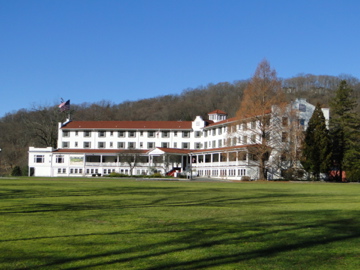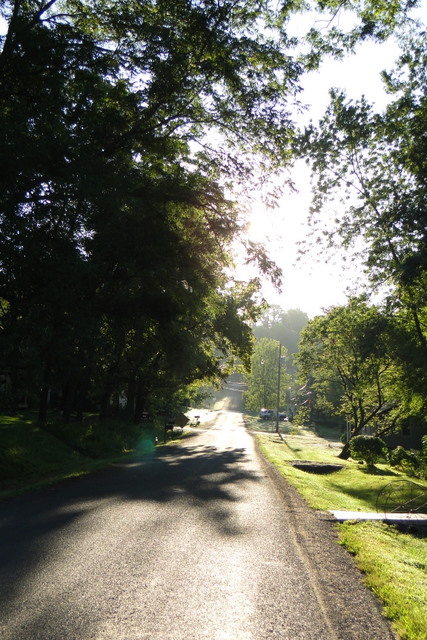
“The proof of the pudding is in the eating,” is a simpler statement than posterity has endowed. In her monograph, “Blessed be he that invented Puddings,” (2013) Dr. Clarissa Dillon explains that it’s just an instruction not to under cook the pudding. Too little time in the water bath results in a loose mass rather than the firm ball that signifies proper texture. Of course, she’s not writing about Jello-O instant pudding in this case.


Clarissa Dillon, Ph.D., professor emeritus at Bryn Mawr College and the foremost authority on 16th through 18th century English and colonial American cooking and household industries, tackles the often confusing interpretations of our shared culinary past. For centuries, puddings were virtually any mixture of ingredients from sweet to savory including meats, seafood, fruits, oats that were blended, wrapped in a casing and steamed. This included what we call today sausages. The casing could be sheep gut or heavy linen cloth.

Puddings were a major component of the English and American table during these centuries and often served as the foundation of a one dish meal in this age of cooking on an open wood fired hearth. In her monograph, Dr. Dillon covers the breadth of combinations that must have delighted an imaginative cook of the day. Puddings can also be seen as the casseroles of the era in so far as any leftover could be added to compliment ingredients creating a new dish.

In an age where few could afford to waste food, even blood from butchered animals combined with cream, eggs, oatmeal, herbs and spices created the famous Black Pudding, a sausage that still graces many a full English breakfast. Without preaching to the reader, Dr. Dillon’s “Blessed be he that invented Puddings” effectively dispels the myth that past diets were monotonous and tasteless. The recipes include a litany of herbs, spices and flavorings that many cooks today believe were either rare or reserved for the very rich – raisins, nutmeg, mace, oysters, anchovies, currents, gooseberries, almonds, saffron, sherry and, by the 18th century, New World Indian corn.

The genius of creating puddings to serve as the center piece of a one dish boiled meal proves that the cook of old was just as conscious of time management as any modern household. The recipe for a basic oatmeal pudding could serve as a savory carbohydrate for some meat and vegetables easily steamed in the same pot. Fortunately, we do not have to labor over the raisins today individually seeding them with a long needle.

An Oatmeal Pudding
This recipe in “Blessed be he that invented Puddings,” by Dr. Clarissa Dillon is from “The Art of Cookery Made Plain and Easy,” by Hannah Glasse, London 1747.
Ingredients
- 16 ounces good quality oatmeal such as Irish steel cut (not quick cooking)
- 16 ounces suet – edible suet from a butcher, not what one puts out for the birds.
- 16 ounces currents
- 8 ounces raisins
- 1/4 teaspoon salt
- 1 large square of thick linen cloth at least 2’X2’
Procedure:
- Finely shred the suit with a knife or the grater blade of a food processor.
- Combine with the remaining ingredients.
- Fill a large pot – 2 to 3 gallon size – with cold water and bring to a boil over high heat (or over a good fire if you have a cooking hearth).
- Dip the linen cloth into the hot water and spread out onto the work counter. Coat the cloth with a handful of flour – this seals the fabric.
- Place the oatmeal mixture in the center of the cloth and bring the corners up to encase the mixture into a ball and securely tie it with kitchen twine. Be careful not to make the ball to tight because there must be room for the oatmeal to expand.
- Place the ball into the boiling water. When the water returns to a boil, lower the heat to maintain a steady simmer. Cook for 2 to 3 hours.
- If desired, half way through cooking, add any meat you wish to the pot – pork butt, cubed beef, chicken – and root vegetables such as turnips, parsnips, carrots and potatoes. Continue to cook until the ball of pudding feels firm to the touch.
- Remove from the water and let rest on a sheet pan for a few minutes. Unwrap the cloth and slice the pudding, surrounding it with the meat and vegetables.
As one 18th century author, William Ellis, put it, “if they cannot dine on this with good boiled beef, or with pork, or with bacon and roots, or herbs, they deserve to want (skip) dinner.”

When in the Philadelphia area do visit the historic Thomas Massey House (c.1696)
Additional articles on historic cooking by Marc d’Entremont at…
Church Keys are going extinct but not Clarissa Dillon: Colonial cooking in the 21st century
You can read more articles by Marc d’Entremont at:
Hellenic News of America
Original World Insights























































You must be logged in to post a comment.